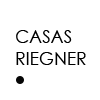Diálogos: Marginalidad y clandestinidad/Abstracción
Participating artists: Miguel Ángel Rojas, Rosemberg Sandoval, Carlos Rojas, Bernardo Ortiz, Luis Roldán, Mateo López, Danilo Dueñas.
Dialogues is a new experimental laboratory or exhibition project that is fundamented on the notion of “dialogue” or conversation. It aims to foster dialogues and sketch out unexpected conceptual and formal intersections between works that have not had visibility in a gallery context, as well as to maximize their meaning and allow new readings. The presentations that make up this project seek to step aside from the traditional exhibition format characterized by an opening event and in some occasions, a closing event. Due to the project’s experimental character, works will often be spontaneously introduced to the gallery space, accentuating the theme or conjunction which brings forth each dialogue.
THE CLANDESTINE AND MARGINAL: A DIALOGUE BETWEEN MIGUEL ANGEL ROJAS AND ROSEMBERG SANDOVAL
A selection of photographs from the late 1970’s, large format paintings made in the early 1990’s and a recent frottage, set off a conversation around the themes of marginality and clandestinity, two fundamental aspects that traverse Miguel Ángel Rojas (Bogotá, 1946) and Rosemberg Sandoval’s (Cartago, 1959) practices.
With a career spanning more than 50 years, Miguel Ángel Rojas’ practice reflects on topics like marginality, gender, identity, injustice, double standards, the loss of values, drug trafficking and war. In the late 1960’s, driven by a personal pursuit and seduced by photography’s technical qualities, Rojas began to explore the photographic medium until adopting it as one of the ideal techniques to critically look at his own context and his difference from the norm.
In his acclaimed photographic series made in the late 1970’s in the Faenza theater—one of Bogota’s most popular theaters for gay encounters— Rojas captures with his camera always hidden inside a suitcase, a clandestine world, a “wild territory” marginalized by a conservative society. The Faenza photographs become testimonies of the artist’s reality who from early on decided to adopt his truth as a main theme in his art. Likewise, these photographs allowed him to come out of the dark and confront his sexuality in an open way.
Rojas’ differences with his social and cultural context which additionally helped him generate his processes within art, are transferred and materialized in large format paintings. References to the dark and clandestine world of the Faenza theater are made evident in the formal aspects of the paintings: the background mosaics, obtained through the technique of frottage that characterize the dypthic Macho Adornado, can be glimpsed in the ghostly and atmospheric photographs of 1979; the profile of a face in search of action and movement, stares at this clandestine space barely lit by the screen’s light, is the face of the artist as an anonymous subject who spies yet desires to possess.
Rosemberg Sandoval’s artistic practice exhumes “subaltern histories” associated with ancestral cultures, while feeding from personal experiences and his close connection to his sociopolitical and geographical context. Tablón Mujer II, a frottage that results from a clandestine action in which Sandoval exorcises and challenges the history of a Colombian archeological site, is a part of an extensive project that according to the artist: “connects the ancestral to the contemporary, whereby the power of marginality is imprinted in the multiple ways and treatments used to attack and magnetize the in situ supports.”
ABSTRACTION DIALOGUE BETWEEN CARLOS ROJAS, BERNARDO ORTIZ, LUIS ROLDÁN, MATEO LÓPEZ, ROSEMBERG SANDOVAL AND DANILO DUEÑAS
A dialogue amongst works by artists from different generations allows to point out the characteristics of an artistic language with a long tradition, which thanks to its relevance and versatility, is suitable for approaching a wide variety of problems. The selection of works on view reveal the complexity and richness of a language that despite its all-encompassing nature, can also be highly critical. By highlighting the multiple and varied nuances of abstraction, the presentation seeks to dilute the simplistic notion that abstract art, by destroying representation, presents itself as empty of content and lacking in effort.
Paula Bossa





